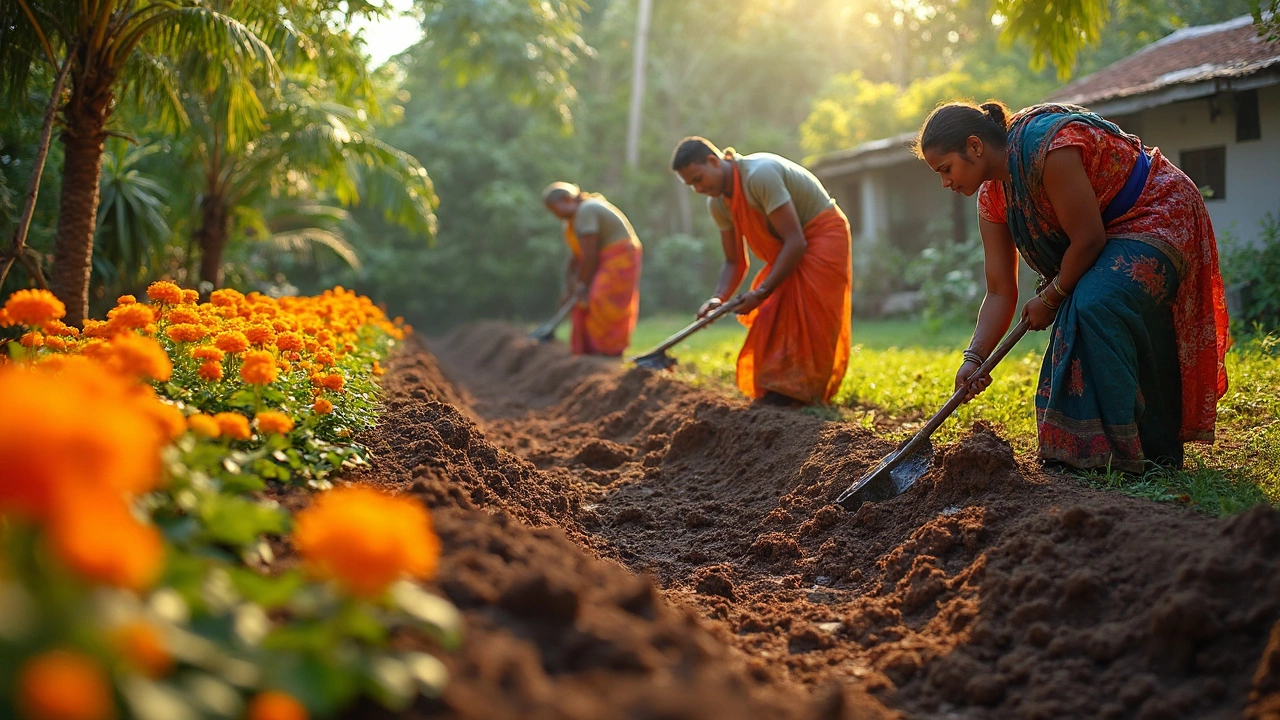Curious about which tool can help you remove the top layer of soil fast, safely, and efficiently? This guide digs deep into the best tools for stripping away topsoil, from manual spades to modern machines. Explore pro tips, clever techniques, and real-world examples from gardens and construction sites. Learn which tool might save you hours of work—or give you a new appreciation for a classic shovel. Get the information you need to pick the right soil removal tool for your project.
Garden Spade: Essential Tool for Digging, Turning Soil, and Planting in Indian Gardens
When you pick up a garden spade, a flat-bladed hand tool designed for digging, edging, and moving soil. Also known as a digging spade, it’s the quiet hero behind every healthy bed, transplant, and compost mix. Unlike a shovel with a curved blade meant for lifting, a garden spade has a straight edge that slices through roots, cuts through compacted clay, and lets you plant seedlings with clean, controlled moves. If you’ve ever struggled to break ground in dense Indian soil, this tool isn’t just helpful—it’s necessary.
It works hand-in-hand with garden soil improvement, the practice of adding organic matter or amendments to make soil more workable. Think of it: you add compost or perlite to loosen heavy soil, but without a good spade, you’re just spreading amendments on top. The spade turns it in. It’s also the go-to tool for balcony gardening, growing plants in small, container-based spaces. Whether you’re repotting basil, creating a new planter, or breaking up old soil in a 2-foot-wide space, the narrow blade of a garden spade fits where bigger tools can’t.
Indian gardeners use it year-round. In winter, it helps prep beds for cool-season crops like spinach and radishes. In monsoon, it clears drainage channels and lifts sodden clumps. In summer, it digs holes for heat-tolerant plants like marigolds or okra. And if you’ve ever tried to plant a hydrangea in a balcony pot, you know how precise you need to be—too deep, and the roots rot; too shallow, and the plant dries out. A garden spade gives you that control.
It’s not fancy. No batteries. No motor. Just steel, wood, and muscle. But that’s why it lasts. Brands like Fiskars, DeWit, and even local Indian makers like Jai Kisan build spades that outlast cheap imports. Look for a forged steel blade and a D-grip handle—it reduces wrist strain when you’re digging for 20 minutes straight. And if you’re working with clay-heavy soil (common in parts of Maharashtra, Tamil Nadu, or Uttar Pradesh), a sharp, narrow spade is your best friend. It doesn’t bend. It doesn’t chip. It cuts.
You’ll find this tool referenced in posts about composting, soil amendments, and even drip irrigation setups—because before you lay a line, you need to dig a trench. Before you plant zinnias or tomatoes, you need to turn the soil. Before you decide if your balcony gets enough sun, you need to clear the old pots and prep the ground. The garden spade is the first step in every real gardening project.
Below, you’ll find real guides from Indian gardeners who use this tool every day. From fixing dense soil to choosing the right plants for tight spaces, these posts show you how a simple spade connects to bigger wins in your garden.
